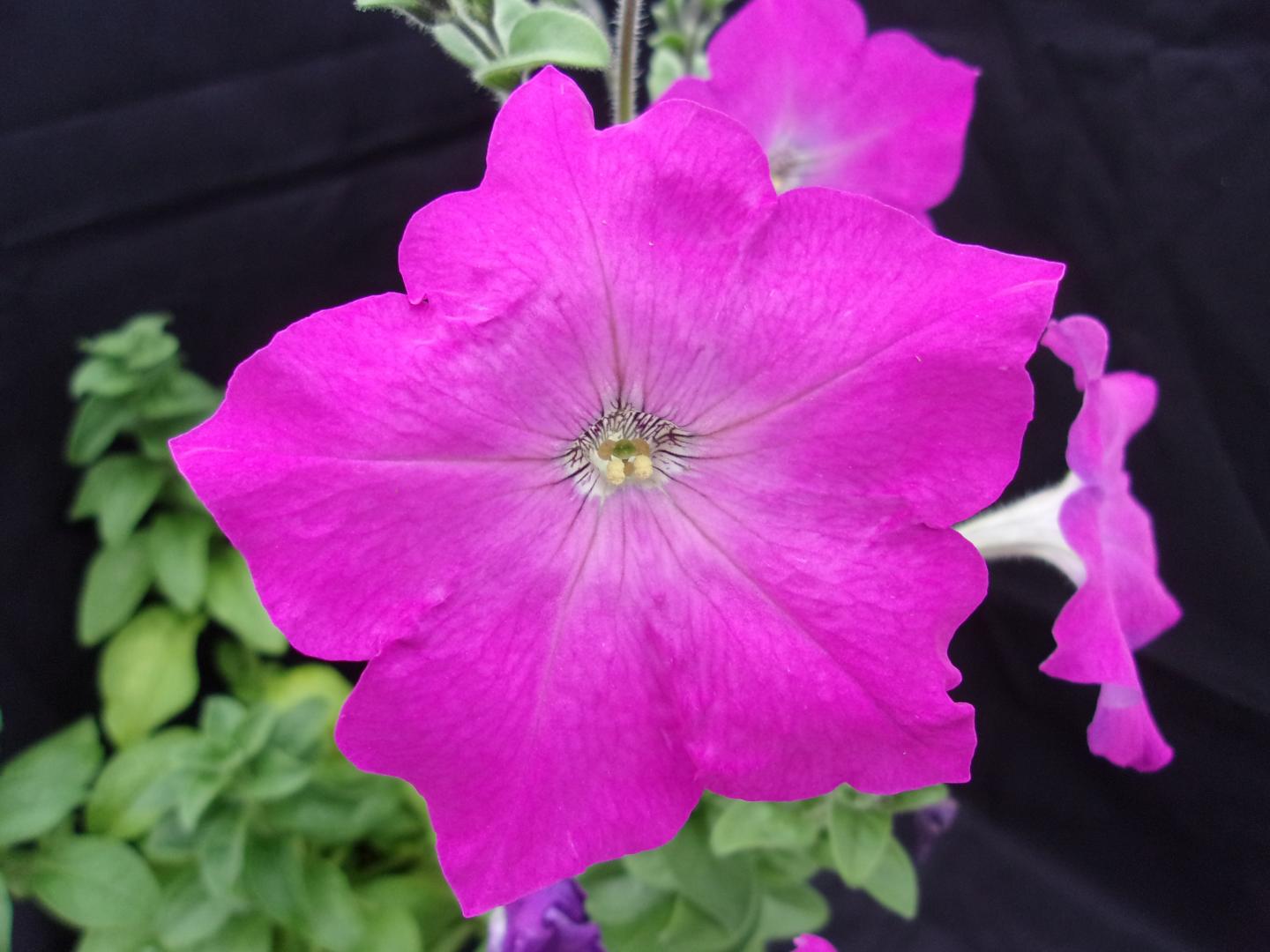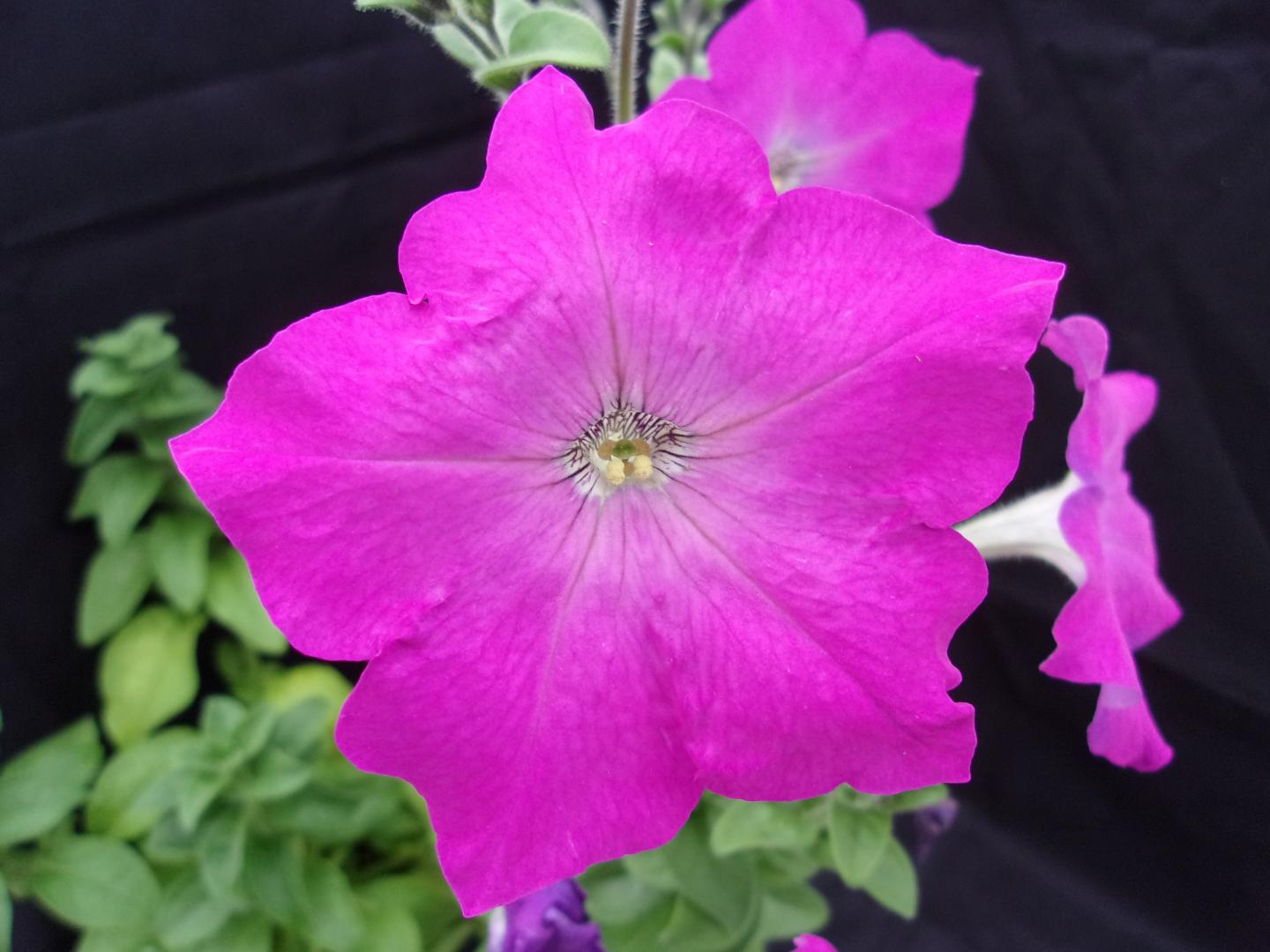
ITHACA, NY– When gardeners look at a petunia, they see the vibrant and versatile blooms of the most popular bedding plant in the U.S. But when plant scientists look at a petunia, they see an important model plant species–one that just became more useful with the release of its parents’ genomes.
An international consortium of researchers has sequenced the two wild parent species of the domesticated petunia. The study, which appears in the journal Nature Plants, reveals that the petunia has a complicated genetic history, having undergone one whole genome triplication shared with all the Solanaceae, and identifies an especially dynamic portion of the genome containing genes for color and scent. The published genomes will be a valuable resource for the many scientists who use the petunia to explore biological questions relating to symbiosis, self-fertilization and circadian rhythms.
“Petunia is the most important bedding plant in the U.S.,” said first author Aureliano Bombarely, an assistant professor of horticulture at Virginia Polytechnic Institute and formerly a postdoctoral scientist at Boyce Thompson Institute while working on the petunia genome. But besides its use in landscaping, the petunia was used to study transposable elements–bits of DNA that can move independently around the genome–and have been used as a model for flower development, scent production and interactions with pollinators.
Domesticated petunias (Petunia hybrida) are a hybrid of two wild species; one with a small, purple flower called Petunia inflata and one with a larger white flower called Petunia axillaris. Through intense breeding over the last 200 years, people have created petunia varieties that flower in almost any color of the rainbow.
While the researchers were expecting that the garden petunia would have received about half of its genes from each parents, instead they saw that the hybrid plant’s genome was about 80 percent white petunia and only about 10 percent purple petunia. The remaining 10 percent of the genes were a mosaic–bits and pieces of sequences from each parent mixed together. In future work, Bombarely plans to investigate the origin of these mosaic genes and whether they played a role in petunia domestication.
“The history of the domestication of this plant species is not simple,” said Bombarely. “I think that the study of this can give us not only a historic perspective, but also can give us tools for the future, to domesticate other species. Petunia is not just a flower. It can also be a model for domestication.”
The two species diverged from each other when the purple petunia assumed a new pollination strategy. The purple petunia attracts bees with its bright color, but once it lost its pigment to become white and began making new scent compounds, it began to attract hawkmoths as a pollinator instead. The parent genomes showed that transcription factors that facilitated this switch can be found in an especially dynamic part of the genome, which may also be responsible for the large diversity of flower colors that domestic petunias can produce.
Petunias are in the Solanaceae family and are descendants of the same plant that gave rise to tomatoes, peppers, potatoes and eggplant. The parental petunia genomes show that petunia underwent at least one separate hexaploidization event where its chromosome number tripled. This event occurred before petunias diverged from tomatoes and other solanaceous crops, about 30 million years ago.
“These results are a huge contribution to Solanaceae research,” said Lukas Mueller, a co-author and associate professor at BTI. “They complement the genomes obtained in the last few years, such as tomato, potato and pepper, and will be mined by the research community for many years to come.”
The petunia genome project did not have dedicated funding, but instead received support from numerous scientists within the petunia research community.
Thomas Sims of the University of Northern Illinois, Francesca Quattroccio of University of Amsterdam and and Cris Kuhlemeier of the University of Bern in Switzerland initiated the project along with Bombarely and other members of The Petunia Platform, a network of petunia scientists founded by Tom Gerats of the University of Nijmegen in the Netherlands. Michel Moser of the University of Bern shares first-authorship on the paper. The genome sequence will be hosted by the Sol Genomics Network, which is run by Lukas Mueller.
###
Media Relations Contacts: Patricia Waldron (607-254-7476, [email protected]) or Kitty Gifford (607-592-3062, [email protected])
Communications Office
Boyce Thompson Institute
533 Tower Road
Ithaca, New York 14853 USA
To learn more about Boyce Thompson Institute (BTI) research, visit the BTI website at http://bti.cornell.edu.
Connect online with BTI at http://www.facebook.com/BoyceThompsonInstitute and http://www.twitter.com/BTIScience.
About Boyce Thompson Institute
Boyce Thompson Institute is a premier life sciences research institution located in Ithaca, New York on the Cornell University campus. BTI scientists conduct investigations into fundamental plant and life sciences research with the goals of increasing food security, improving environmental sustainability in agriculture and making basic discoveries that will enhance human health.
BTI employs 150 staff, with scientists from 40 countries around the world and has twice been named as one of the Best Companies in New York State. Its 15 principal investigators are leading minds in plant development, chemical ecology, microbiology and plant pathology, and have access to the institute’s state-of-the-art greenhouse facilities with computerized controls and a system of integrated pest management. BTI has one of the largest concentrations of plant bioinformaticists in the U.S., with researchers who work across the entire spectrum of “omics” fields. BTI researchers consistently receive funding from NSF, NIH, USDA and DOE and publish in top tier journals. Throughout its work, BTI is committed to inspiring and educating students and to providing advanced training for the next generation of scientists. For more information, visit http://www.bti.cornell.edu.
Media Contact
Patricia Waldron
[email protected]
405-514-5209
@BTIscience
http://bti.cornell.edu
The post Wild parents’ genomes reveal complex genetic past for garden variety petunias appeared first on Scienmag.





